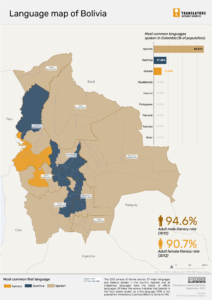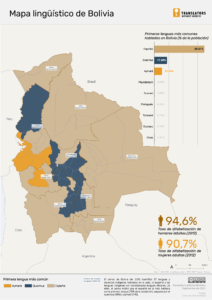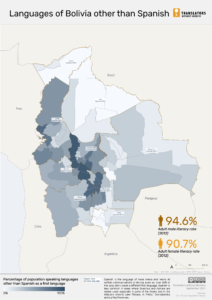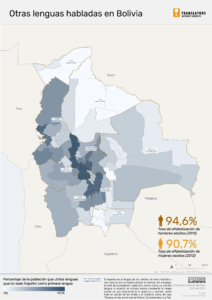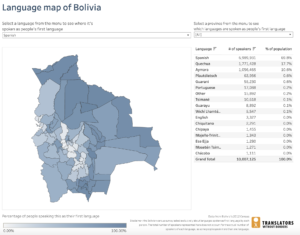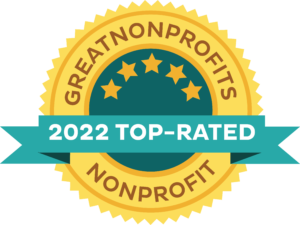The 2012 census of Bolivia records 37 languages. The main language of Bolivia is Spanish, spoken by 70% of the population. Many other Indigenous languages are also used, most prominently Quechua (18%) and Aymara (10%). Indigenous languages and Spanish are official languages of the state according to the 2009 Constitution.
Spanish and Quechua are spoken primarily in the Andes Region, while Aymara is mainly spoken in the Altiplano around Lake Titicaca. Chiquitano is spoken in the central part of Santa Cruz and Guaraní in the southeast on the border with Paraguay.
German is spoken by 160,000 people, of whom about 70,000 live in the Santa Cruz Department. The Mennonite community, of Friesian, Flemish and North German descent, speak Plautdietsch, a German dialect, informally and Standard German for reading and writing and formal communication. Portuguese is also spoken near the border with Brazil and around 0.2% of Bolivians speak it as their first language.
The literacy rate in Bolivia in 2012 was 92%, and slightly lower for women (90.7%) than men (94.6%).
Explore the data by province here.
These maps and datasets are published with funding from the World Food Programme.
Curated datasets
Available on Humanitarian Data Exchange (HDX)
For more information, please contact maps@translatorswithoutborders.org
Maps and resources:
Languages of Bolivia: Static (EN)
Static map highlighting the most common languages spoken in Bolivia. Data is from the 2012 census.
Languages of Bolivia: Static (ES)
Static map highlighting the most common languages spoken in Bolivia. Data is from the 2012 census.
Languages other than Spanish in Bolivia: Static (EN)
Static map highlighting the most common languages besides Spanish spoken in Bolivia. Data is from the 2012 census.
Languages other than Spanish in Bolivia: Static (ES)
Static map highlighting the most common languages besides Spanish spoken in Bolivia. Data is from the 2012 census.
Languages of Bolivia: Interactive (EN)
Interactive map showing the number of speakers and geographic spread of different languages in Bolivia. Data is from the 2012 census.
